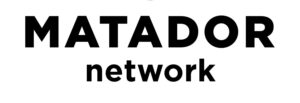Breathwork Training for Mountain Athletes.
Breathe stronger. Climb higher. Go farther.
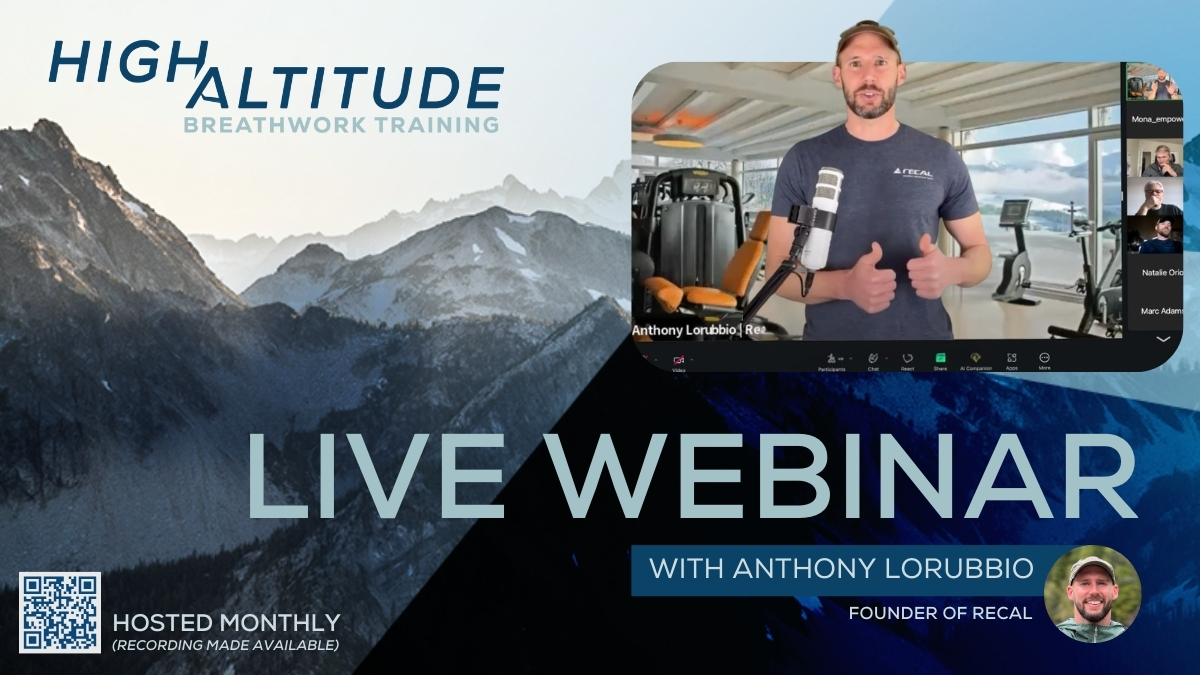
Want to join the next live webinar?
Register below, and we’ll send you the webinar details.
Note: if you’re unable to attend live, a recording will be sent to you.
Did you miss the last webinar?
Watch the recording here:
ALTITUDE TRAINING.
FROM ANYWHERE.
Whether you’re a sea-level dweller gearing up for a trek in Nepal, or an experienced climber eyeing your next summit, this program was specifically designed for you to train, at any elevation, and reach your goals.
3 WAys to train:
PERSONAL COACHING
- Everything in the video course, PLUS:
- 3 virtual 1-1 training sessions
- Tailored training to fit your needs
ONLINE VIDEO COURSE
- Everything in self-guided, PLUS:
- Weekly video explanations and demos
- Insights and advice from your coaches
SELF-GUIDED
- The full 5-week training program
- Written descriptions of each exercise
- Workbook to track progress
- TrainingPeaks plan
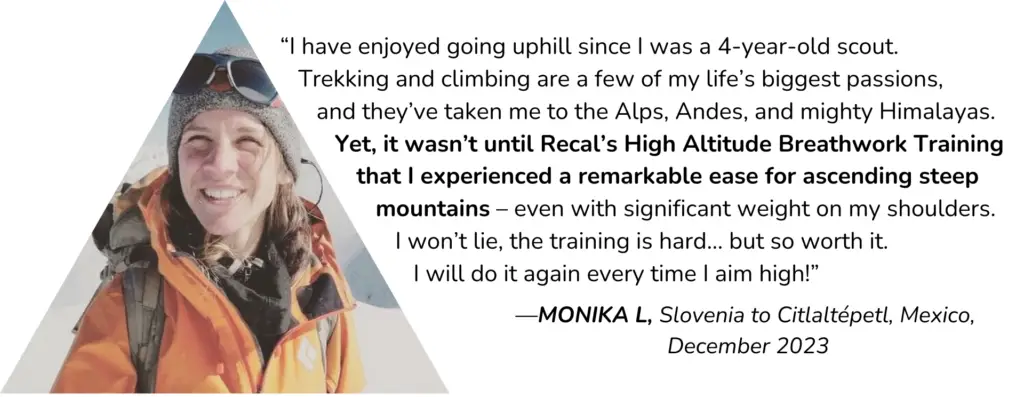
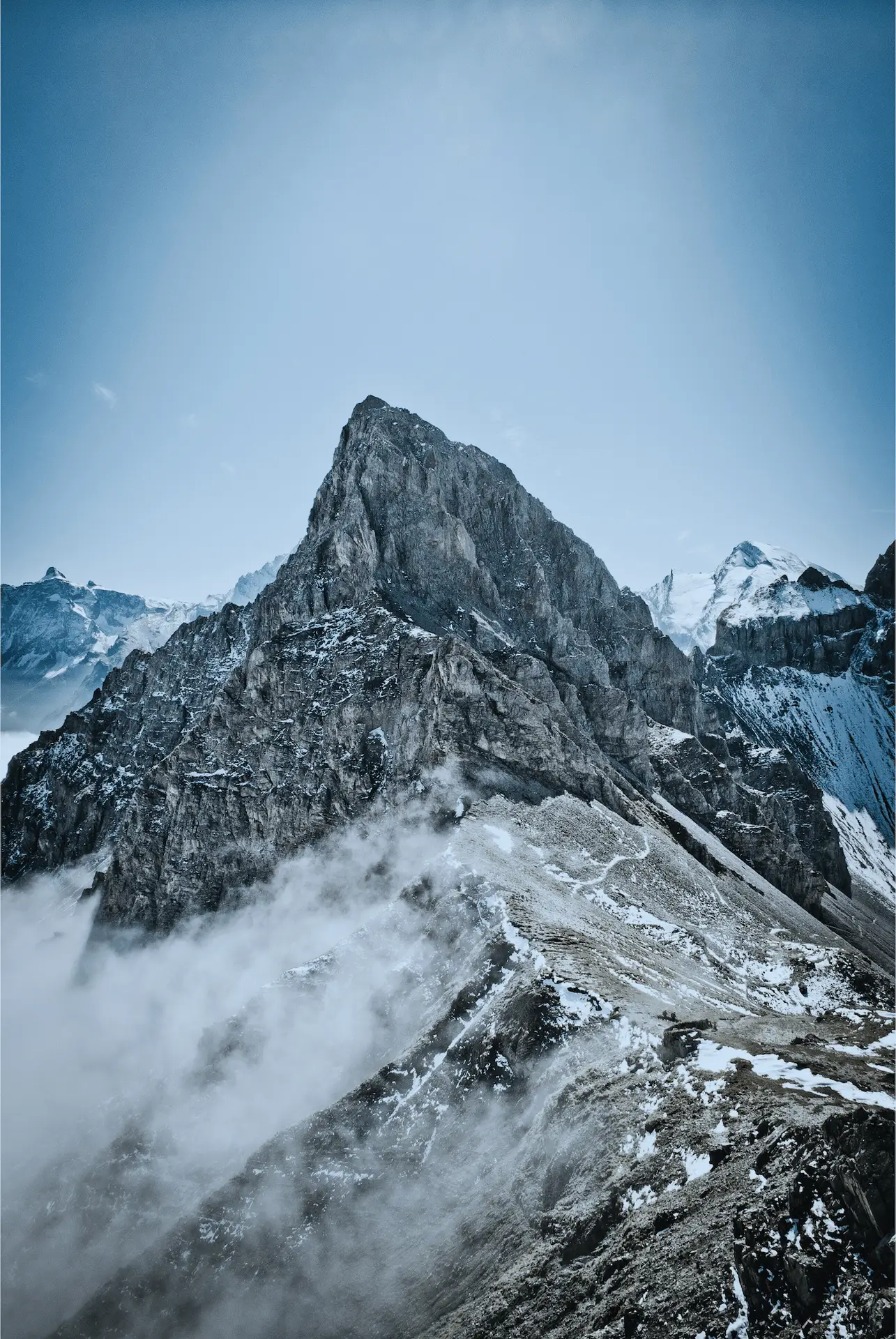
Want to chat? Book a free consultation:
so, What happens at altitude?
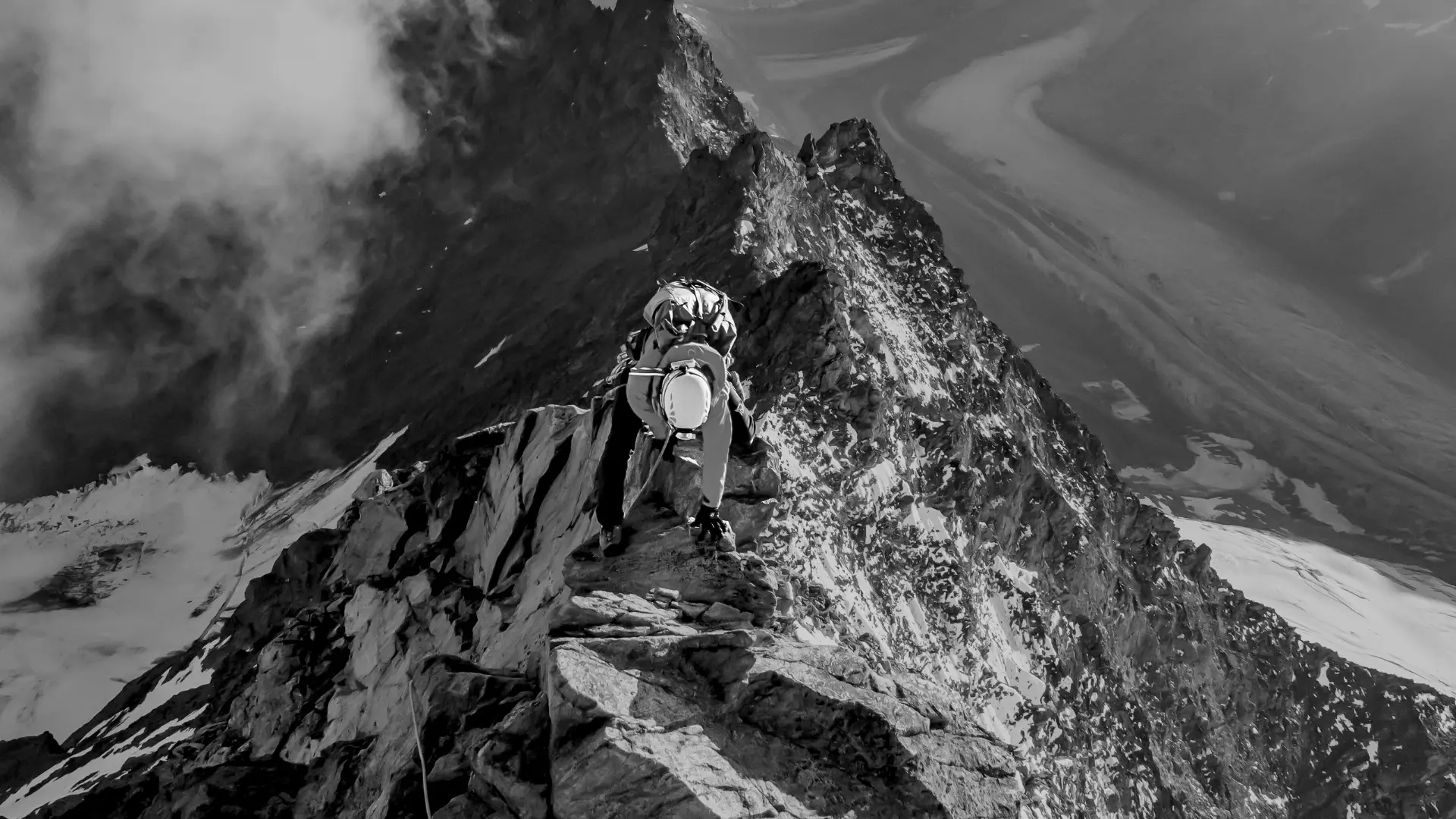
The lower-pressure air at altitude:
- Decreases your oxygen uptake, causing hypoxia
- Requires more respiratory muscle strength
- Makes it challenging to maintain mental clarity
Learn how we combat these effects with breathwork training.
Hear from our founder, Anthony Lorubbio, about the science behind our program:
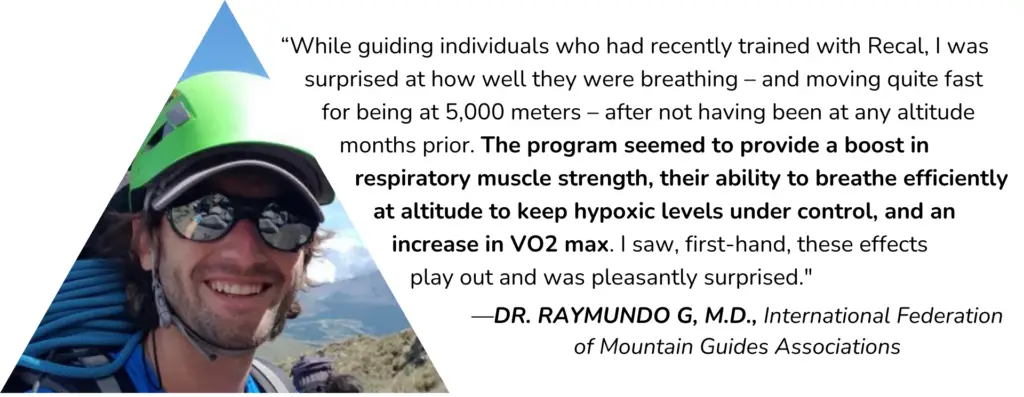
High altitude breathwork training enables you to:

IMPROVE YOUR OXYGEN UPTAKE CAPACITY

MAKE TARGETED ADAPTATIONS IN YOUR BODY

BUILD RESPIRATORY MUSCLE STRENGTH
“Increasing the oxygen-carrying capacity of the blood is the most important factor when adjusting to an increase in altitude, and breathwork training exercises are an ideal way to prepare in the weeks before ascent.”
—Patrick McKeown, author of The Oxygen Advantage
Monika L.
Slovenia → Pico de Orizaba Mexico, December 2023
Dr. Raymundo, MD, IFMGA
International Federation of Mountain Guides Associations
“While guiding individuals who had recently trained with Recal, I was surprised at how well they were feeling – and moving quite fast for being at 5,000 meters – after not having been at any altitude months prior. The program seemed to improve their ability to keep hypoxic levels under control – which we monitored using a pulse oximeter – and an increase in oxygen uptake.
I saw, first-hand, these effects play out and was pleasantly surprised.”
Chris M.
Minnesota USA → Everest Base Camp in Nepal, October 2022
Catherine C.
Ontario Canada → Mt. Cotopaxi, Ecuador, February 2024
Your Coaches
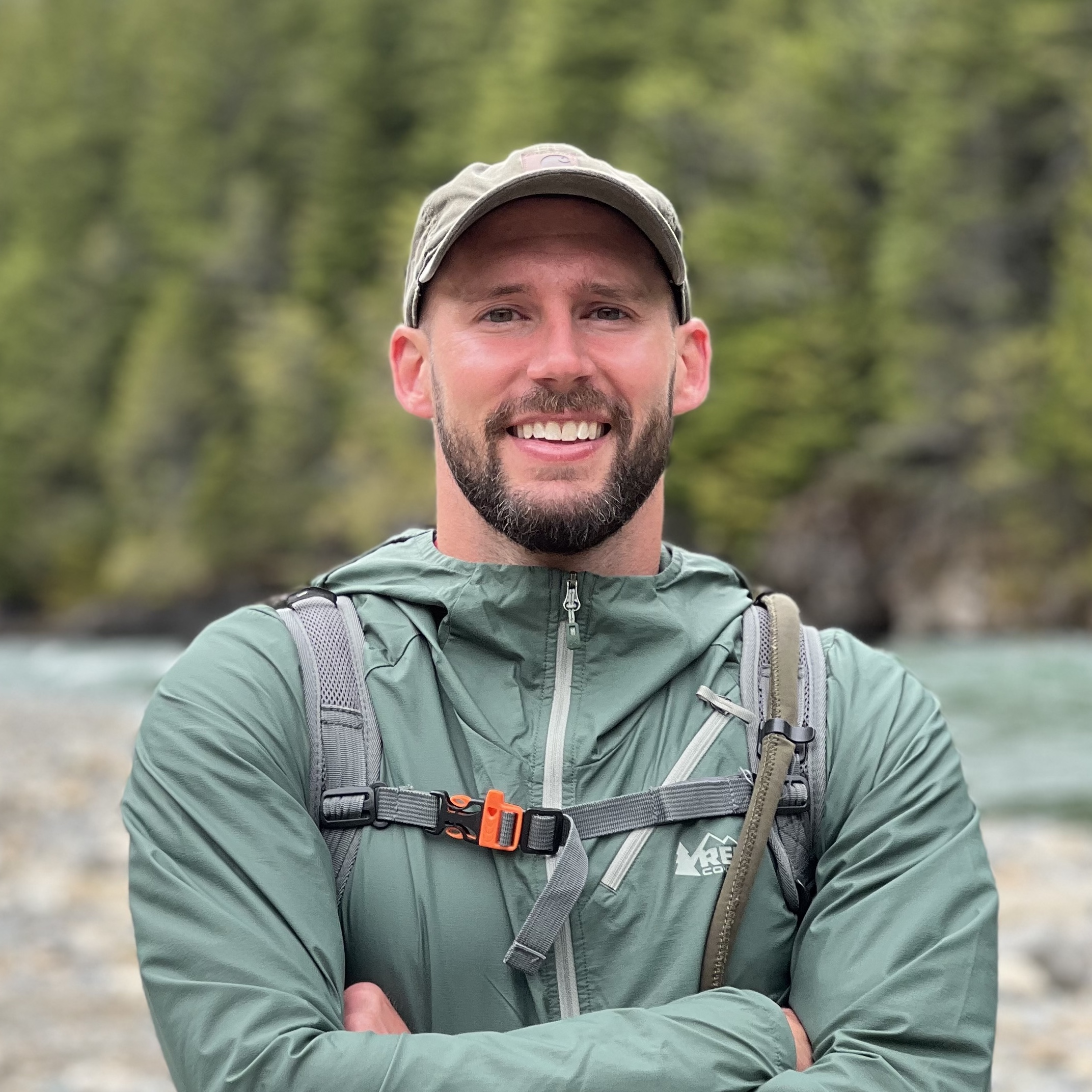
"We created this course to share the tools that helped me and others achieve ‘Sea to Summit’ endeavors using breathwork exercises to prepare."
Anthony Lorubbio is the founder of Recal. He is certified in the Wim Hof Method, Oxygen Advantage, and Peak Flow breathwork training modalities. Anthony coaches teams and individuals in applying these techniques to prepare for and achieve their personal mountain endeavors. He's also passionate about helping adventurous entrepreneurs like himself build resilience on and off the mountain.
want to chat? Book a free consultation:
What the training IS vs IS NOT
BONUS...it's not just for high peaks
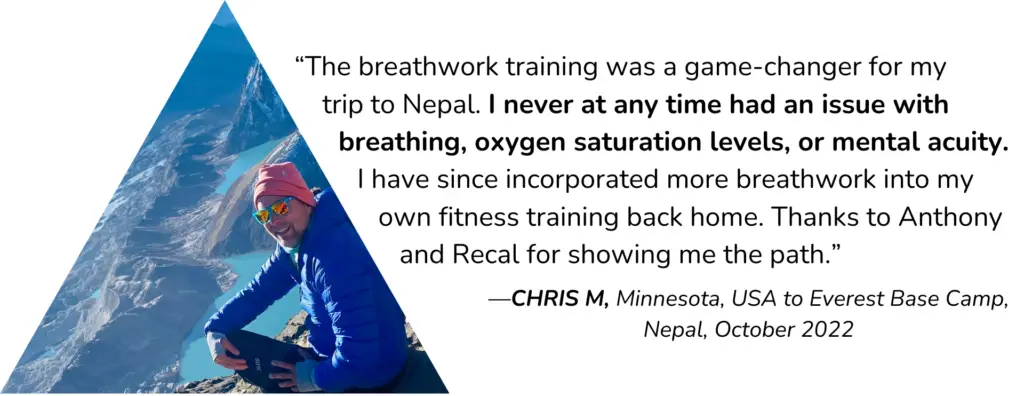
Prepare your breathing to climb higher
Start preparing today with our most popular training:
Lifetime access to the online video course includes:
- Weekly video modules unpacking Recal's holistic approach, the science of breathwork, and exercises for adapting to the effects of altitude.
- Real-life demonstrations of Recal Founder, Anthony Lorubbio, applying these techniques for his Sea-to-Summit Challenge.
- Daily exercises to improve breathing efficiency, prepare your body for less oxygen and more CO2, stregthen respiratory muscles, and prepare your mind for stressful situations.
- Guided workbook to accompany your training and track progress.
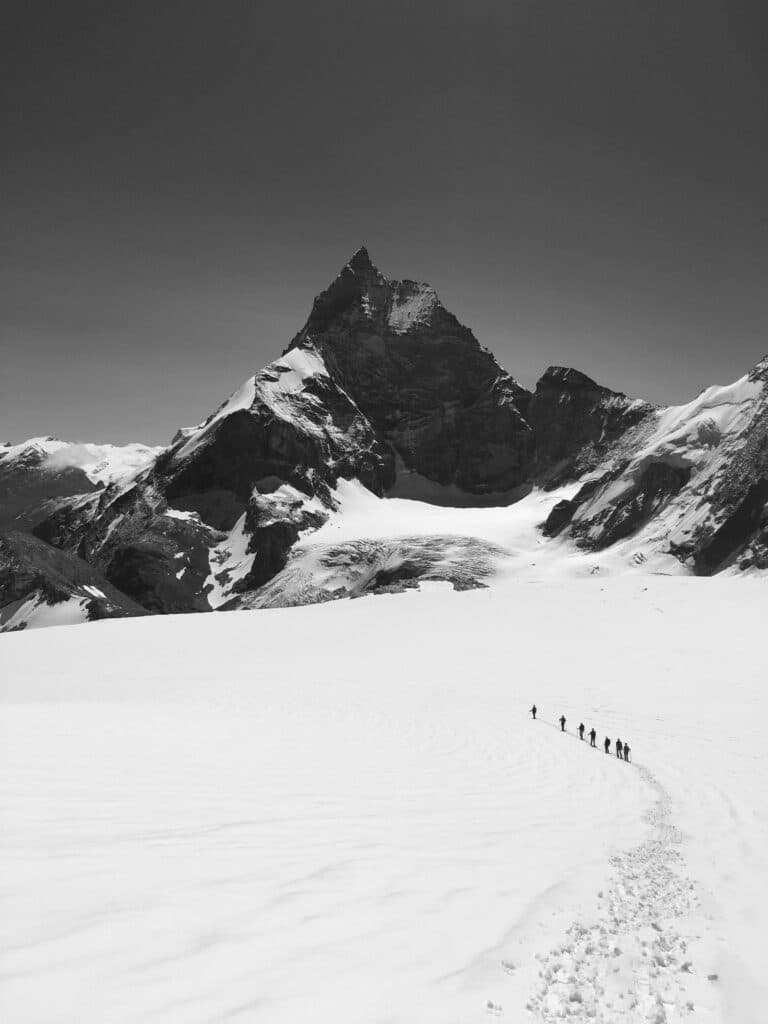
FAQ about the Online Video Course:
High altitude environments have a combination of low air pressure and less oxygen, making it harder to breathe, (especially in), and tire more quickly. You can also develop hypoxia (low oxygen) if not prepared.
By doing altitude training, you can make key changes that will pay off in this environment:
- Strengthening of your respiration muscles, allowing your body to breathe more effectively in the lower air pressure,
- Increase your body’s oxygen uptake capacity (also known as VO2 max) as a result of higher hemoglobin (red blood cell) concentration,
- Train your mind to remain sharp amidst the mental fogginess that comes with altitude, and
- Increase your tolerance for CO2, which will decrease the FEELING of breathlessness at altitude, which will make breathing easier.
A cautionary note: there is no training guaranteed to prevent altitude sickness, but breathwork training can help reduce its negative effects.
Recal’s High Altitude Breathwork Training program was specifically designed to prepare you for trekking at high-altitudes. Based on real-life application by our coaches, the program will strengthen your body and mind using the latest breathwork protocols and evidence-based practices for creating physiological adaptations for altitude.
During the five-week, online program our coaches will help you:
- Understand the effects of high altitude on your body and mind.
- Develop physical fitness tailored for high-altitude environments.
- Adapt your body in a way that will help with altitude – despite training at lower elevations.
- Master essential breathing techniques for high-altitude.
- Navigate the mental challenges and stay focused during your adventure.
Research consistently shows that the mindful application of breathwork can have a positive impact on your life, such as reducing stress and anxiety, improving sleep quality, decreasing fatigue and recovery time after physical activity, boosting your immune system, improving emotional intelligence, and more.
More recently, research (and our own application of the research) has proven that the use of breathwork training can prepare you for high altitude situations.
In this training, we will focus on breathwork for three key reasons:
To improve your breathing efficiency. Improving the efficiency of your breathing is critically important for preventing severe hypoxia (low oxygen) at altitude. Studies show that slow, deep breathing improves blood oxygenation, which is necessary for reducing the effects of severe hypoxia. Our goal with this training is to enable you to keep your breathing rate slow and controlled – which will enhance blood oxygenation.
To create physiological adaptations. This program is designed to simulate high altitude environments – the combination of low oxygen (hypoxia) and high carbon dioxide (hypercapnia) – through breathwork. Exercises, such as breath-holds, will help you mentally and physically prepare for a hypoxic environment and increase your oxygen uptake capacity (VO2 max). Along the way, your body will make adaptations, including the release of erythropoietin (EPO) to create new red blood cells (See: research here). Simultaneously, you will train your CO2 tolerance, which will improve the efficiency of oxygen delivery to your muscle tissues – enabling you to keep going when things get tough.
To increase your respiratory muscle strength. Due to the thinner air at high altitude, your body will have to work harder to get air into the lungs. Therefore, our program incorporates strength training exercises for your diaphragm and intercostal muscles – key muscles used in breathing. Also, we have exercises that incorporate the use of the Oxygen Advantage SportsMask for increased resistance and additional strength training (this is recommended, but not required).
Designed to begin 5-weeks prior to your endeavor, the training begins by establishing a personal baseline for some important breath metrics, including a body oxygen level test, carbon dioxide tolerance test, and maximum breathlessness test. Don’t worry, we go through these in detail in the course.
Each week, you’ll train using protocols to improve these metrics, while also learning breath-based mindfulness practices that will serve you during and after your adventure. You’ll come out of the program more mentally resilient and emotionally intelligent; this is not ‘just’ about altitude.
Week 1: Establish Your Baseline Breath Assessments and Begin with High Altitude Simulation Training
Week 2: Discuss How Breathwork Addresses Altitude Challenges, Build on the Training with Sport-Specific Protocols
Week 3: Continue with the Sport-Specific Protocols, Push for Breath Assessment Improvements
Week 4: Our Most Intense Week, Mental Fitness for High Altitude (and life!)
Week 5: Final Push for Physiological Adaptations In Preparation for the Altitude
The course concludes with a brief training on how to apply proper breathing techniques during your high altitude adventure.
The five-week online program includes:
Weekly video modules unpacking Recal’s holistic approach, the science of breathwork, and exercises to prepare you, your mind, and your body to the realities of high altitude.
Real-life demonstrations of Recal Founder, Anthony Lorubbio, applying the techniques for his own ‘Sea-to-Summit’ Challenge.
Daily exercises to improve breathing efficiency, prepare your body for less oxygen, lower air pressure, and higher blood CO2, strengthen your respiratory muscles, and prepare your mind to stay sharp at altitude and in stressful situations.
A guided workbook to accompany the learning journey and track your progress.
The High Altitude Breathwork Training is $275, which includes access to all training materials and resources for life.
If you would like 1-on-1 guidance specific to your adventure, you have the option to add-on personal coaching support.
Yes. The training is embedded in high altitude simulation breathwork training protocols. You will undergo exercises that simulate a hypoxic (low O2), hypercapnic (high CO2) bodily state. Your elevation has no bearing on the ability to simulate these environments — it is done solely using the breath.
In the end, you will be better adapted to handle the effects of high altitude.
- Strengthening of your respiration muscles, allowing your body to breathe more effectively in the lower air pressure,
- Increase your body’s oxygen uptake capacity (also known as VO2 max) as a result of higher hemoglobin (red blood cell) concentration,
- Train your mind to remain sharp amidst the mental fogginess that comes with altitude, and
- Increase your tolerance for CO2, which will decrease the FEELING of breathlessness at altitude, which will make breathing easier.
Absolutely not.
This training is designed to get your body, blood, muscles, and mind ready to make achieving your goals at altitude 1) attainable and 2) more enjoyable.
However, this is not an acclimatization replacement. We strongly advise you to respect the acclimatization process and advice from local guides and experts.




